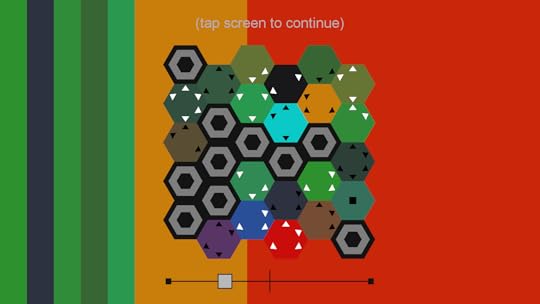Kill Screen Magazine's Blog, page 279
March 20, 2015
Virtual reality may be coming to the courtroom
Most people do not want to be picked for jury duty. You have to take time off work. You’re made to sit around for hours. Wouldn’t it be better if jury duty consisted of exploring Link’s childhood village from Ocarina of Time in virtual reality?
Jury duty is unlikely to ever boil down to playing videogames.
Although jury duty is unlikely to ever boil down to playing videogames, that fantasy isn’t entirely off base. Virtual reality may be coming to courtrooms in the near(ish) future. Swiss researchers, notes Citylab’s Laura Bliss, “published a paper and video examining the use of the Oculus Rift to explore 3D computer reconstructions of events and crime scenes discussed at trials.”
Reconstructions are already used in trials but they are more like guided tours. The angles that you can see (and pursue) are all proscribed. This, according to Lars Ebert, one of the Swiss researchers, is a major drawback. Bliss cites him as saying:
Usually, [when you're trying to determine what happened], the questions are 3D questions: Could this person really have seen this other person? Where did this bullet fly from? What was the impact angle of the car? These are 3D questions, but the evidence and reconstruction of the evidence is usually presented in 2D, on paper or screens. It always comes with loss of information, which makes it difficult to assess what actually happened.
It’s worth noting that videogames have previously brought members of the public into the courtroom. Capcom’s Ace Attorney series, for instance, casts the player as a defense attorney navigating the Japanese criminal justice system. Likewise, They Call Me Rump revisits the classic fable Rumpelstiltskin by putting you in the shoes of a lawyer in a custody dispute. To an extent VR in the courtroom would bring this dynamic full circle: Simulation would now be in the courtroom instead of being of it.

The real cultural reference point for jury duty VR simulation, however, does not come from videogames that simulate the work of lawyers. Rather, it comes from true crime series like Serial or The Jinx. These series aren’t about individual crimes so much as they are about laypeople’s obsessions with crimes and their ability to find new angles. For better or for worse, courtroom simulations are largely designed to avoid this sort of outcome. They direct your attention and do not allow for derogation.
Examining a crime scene using a VR headset, however, would introduce a degree of freedom to the proceedings. Sure, you could only see what’s in the simulation, but at least you could look around a bit. Think of it as the free play movement of courtroom simulations. If the last six months of pop culture have proven anything, it’s that we can easily be immersed in crimes.
Announcing a free monthly public arcade at the Ace Hotel in Brooklyn
What are you doing March 31?
A new game aims to reclaim one of our most taboo words
Play a female sexuality drawing game too scandalous to even mention by name.
Sature proves that painting and turn-based strategy can get along
Ian Sundstrom has managed the impossible. At least, in my mind he has. He has found a connection between painting and turn-based strategy. My mental landscape positions these two concepts at polar opposites: painting is joyous and expressive, while turn-based strategy is stern and composed. One is a child's dance across a grassy field, the other is an old man brushing a speck of dust from his pristine military uniform.
a "chess-like dance"
A former painter and artist, Sundstrom says that when it came to forming the idea for his first game, he drew from the process of mixing colors on a palette. I figure that it must have been one hell of a reverie for him to have moved his thoughts from those splodges of color to designing a hex-based board of competition. The segue simply does not exist in my understanding of reality. Yet, Sundstrom proves my perception to be limited.
His game is out now. It's called Sature. Sundstrom puts it best when describing it as a "chess-like dance." It tends to run shorter than a game of Chess typically does. And due to its color-based interface it ends up being more attractive—my relationship with bright colors is as a crow's to shiny objects.

The idea is to turn all of your opponent's hexagonal tiles a darker shade than your own. This is done by placing your tiles in the grid adjacent to your competitor's so that they transfer their color into them (as directed by the arrows on the tiles). The brighter a tile is the more color it has to transfer, meaning it will be more effective. But you also need to account for how different colors mix. It's for this reason that you can refer to a color wheel at any time.
Perhaps it's that I associate learning how colors mix together with primary school that gives Sature its pleasant veneer. A lot of strategy games ask us to move units into position during a grand recreation of one of history's greatest battles; it's all old generals, muddy fields, and text-heavy battle logs. But Sature is concerned only with spilling colors into one another. Once a match is over you also have a unique palette to peel your eyes over.
Add color-blind support and randomly generated boards and you have a game that anyone can have a go at, and as many times as it entertains them. Grab a friend, sit them down next to you, and let your quickfire competition fabricate a rainbow honeycomb.
You can download Sature for free on the App Store and Google Play. The full game is available through a single in-app purchase of $2.99. It's also available for PC on itch.io.
Chappie is a terrible, terrible, important movie
Perhaps the most unintelligent film about artificial intelligence ever made.
A game about American railway bridges collapsing isn't as absurd as it seems
There's a moment in every child's life, when posing as an amateur builder, when they realize a simple but fundamental principle of design: things work better when you stagger them. In bricklaying, Lego or otherwise, the staggering of joints is called a running bond. In Mark Ellis: Train Bridge Inspector, it's nonexistent.
The game, a physics simulator rendered in a few different shades of brown, plays with this principle by letting locomotives loose across bridges held up by precarious arrangements of monochromatic blocks. At the start of each level, you choose whether or not to give a bridge the Mark Ellis stamp of approval. Then comes the moment of truth as you watch a cartoonish train bobble down it toward an uncertain fate. Were you right to approve?
Sometimes everything falls apart before the train even appears on screen
At its most basic, Train Bridge Inspector offers the primitive thrill of a single-trick Rube Goldberg Machine. Each block vibrates under the stress of the oncoming train, slowly wiggling out of its starting position until large stretches of track go flying into the chasm they were meant to bridge.
Strictly speaking, the way to "win" in Train Bridge Inspector is to correctly guess whether a train can make it from one side of the bridge to the other. Sometimes everything falls apart before the train even appears on screen. Other times, sheer momentum will carry the train to safety despite the debris surrounding it. In the end, though, there's nothing to collect or gain. Getting an inspection right doesn't lead to success so much as forestall the eventual failure. This end up being thematically appropriate, given the hazardous state of many railroads and bridges in the real world.
Adriaan de Jongh and Rami Ismail created the game together during the 2015 Train Jam, in part as a reflection of the fact that, as they state on the game's website, "American train bridges are assessed by the companies that control the railroad." Made while they rode 57 hours from Chicago to San Francisco on Amtrak's California Zephyr line, the game doubles as a comedic reflection on the darker possibilities of travel by rail.
"American train bridges are assessed by the companies that control the railroad"
Funnily enough, a couple weeks ago, John Olivermade headlines when he tore into the state of America's infrastructure. But the crumbling edifice of the nation's transportation system is nothing new. In an in-depth report for the La Crosse Tribune last December, Chris Hubbuch detailed the shortcomings of actual train bridge inspection in some detail. In addition to there being only six inspectors for the nation's estimated 76,000 rail bridges, the Federal Railroad Administration's only real objective is to, "verify the bridge's physical appearance matches what's in the railroad's report." While the FRA provides oversight, direct responsibility for rail safety lies, as Jongh and Ismail noted, with the railroad companies themselves.

And this element of dark but straightforward satire is part of what gives Train Bridge Inspector its absurd charm. Out of context, the game is a clever piece of distractionware; a fun way to passively watch minor disasters unfold and, by virtue of the Mark Ellis stamp of approval, feel ownership over the outcome.
But that little bit of knowledge—that trains pass over nearly century old bridges that haven't been properly inspected every day—in the back of your mind can give Train Bridge Inspector an added kick. It's the obviousness of the problem and solution that gives the issue a comedic twist, which is why Oliver seized on it. And it's that same dynamic that makes seeing a train catapulted across a nonsense bridge in Jongh and Ismail's game elicit childish giggles from those who play it.
You can download Mark Ellis: Train Bridge Inspector for free on the App Store.
On Final Fantasy XV and “the real world”
Behemoth, meet bald eagle.
March 19, 2015
This week's Playlist pick: Sound System II
Sign up to receive each week's Playlist e-mail here!
Also check out our full, interactive Playlist section.
SOUND SYSTEM II (BROWSER)
BY PIPPIN BARR
Music and videogames go together like peanut butter and jelly: the visceral experience of play magnified by an equally sensorial accompaniment. In Sound System II, Pippin Barr continues to explore the interconnected relationship between play and music, this time through a modified version of Atari's Breakout. The player's interactions with the ball and bricks cascade into a scintillating soundscape.The longer you can stay alive, the more room you give your funky tune to breath. Sound System II is the ultimate marriage between music and play, rendering your skill an instrument and the beat a personal metronome egging you on to a higher score.
Perfect for: Garageband DJs, Atari fans, the Lisa Simpsons of the world
Playtime: As long as your beat drops
TouchTone holds a mirror to our post-Snowden surveillance state
"If you solve something, say something."
Learn to laugh at terrible stereotypes with this upcoming card game
We might all be terrible, but at least we can laugh about it with a card game.
Kill Screen Magazine's Blog
- Kill Screen Magazine's profile
- 4 followers



